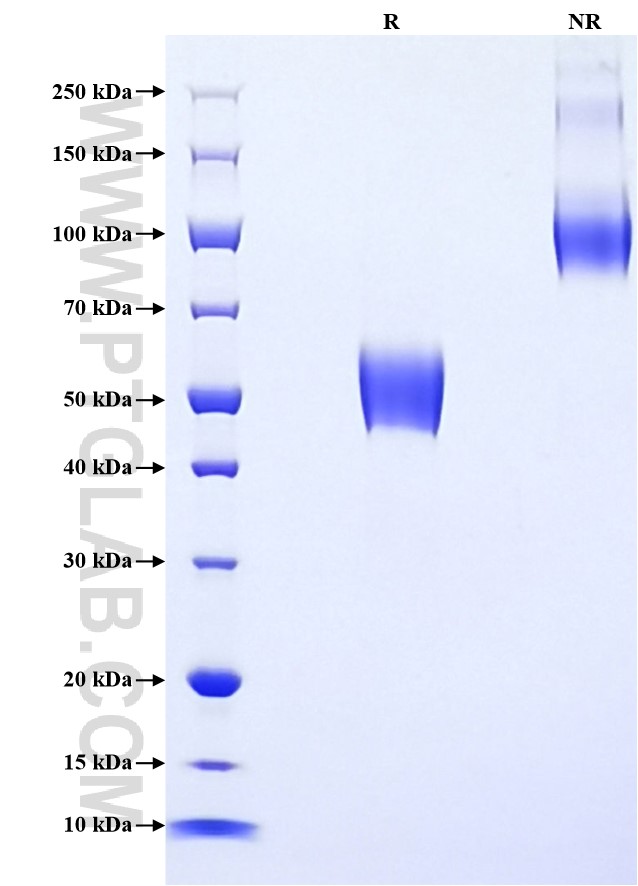Recombinant Human TMIGD2/CD28H protein (rFc Tag)
种属
Human
纯度
>90 %, SDS-PAGE
标签
rFc Tag
生物活性
未测试
验证数据展示
产品信息
| 纯度 | >90 %, SDS-PAGE |
| 内毒素 | <0.1 EU/μg protein, LAL method |
| 生物活性 |
Not tested |
| 来源 | HEK293-derived Human TMIGD2 protein Leu23-Gly150 (Accession# Q96BF3-1) with a rabbit IgG Fc tag at the C-terminus. |
| 基因ID | 126259 |
| 蛋白编号 | Q96BF3-1 |
| 预测分子量 | 40.3 kDa |
| SDS-PAGE | 46-60 kDa, reducing (R) conditions |
| 组分 | Lyophilized from 0.22 μm filtered solution in PBS, pH 7.4. Normally 5% trehalose and 5% mannitol are added as protectants before lyophilization. |
| 复溶 | Briefly centrifuge the tube before opening. Reconstitute at 0.1-0.5 mg/mL in sterile water. |
| 储存条件 |
It is recommended that the protein be aliquoted for optimal storage. Avoid repeated freeze-thaw cycles.
|
| 运输条件 | The product is shipped at ambient temperature. Upon receipt, store it immediately at the recommended temperature. |
背景信息
Transmembrane and immunoglobulin domain-containing protein 2 (TMIGD2, also known as CD28H and IGPR1), plays a role in cell-cell interaction, migration, and angiogenesis. Through interaction with HHLA2, it costimulates T-cells in the context of TCR-mediated activation and enhances T-cell proliferation and cytokine production via an AKT-dependent signaling cascade. TMIGD2 has been associated with several diseases, particularly in the context of cancer. It is aberrantly expressed by human AML cells and can be used to identify and enrich functional LSCs. The predicted molecular weight of the TMIGD2 protein is 31 kDa. The higher molecular weight of TMIGD2 could be associated with its potential glycosylation at its extracellular region.
参考文献:
1. Nader Rahimi, et al.(2012) Mol Biol Cell. 23(9):1646-56. 2. Yuwen Zhu, et al.(2013) Nat Commun. 4:2043. 3. Hao Wang, et al,(2024) Nat Commun. 15(1):11 4. Nader Rahimi, et al. ( 2012) Mol Biol Cell. 23(9):1646-56


